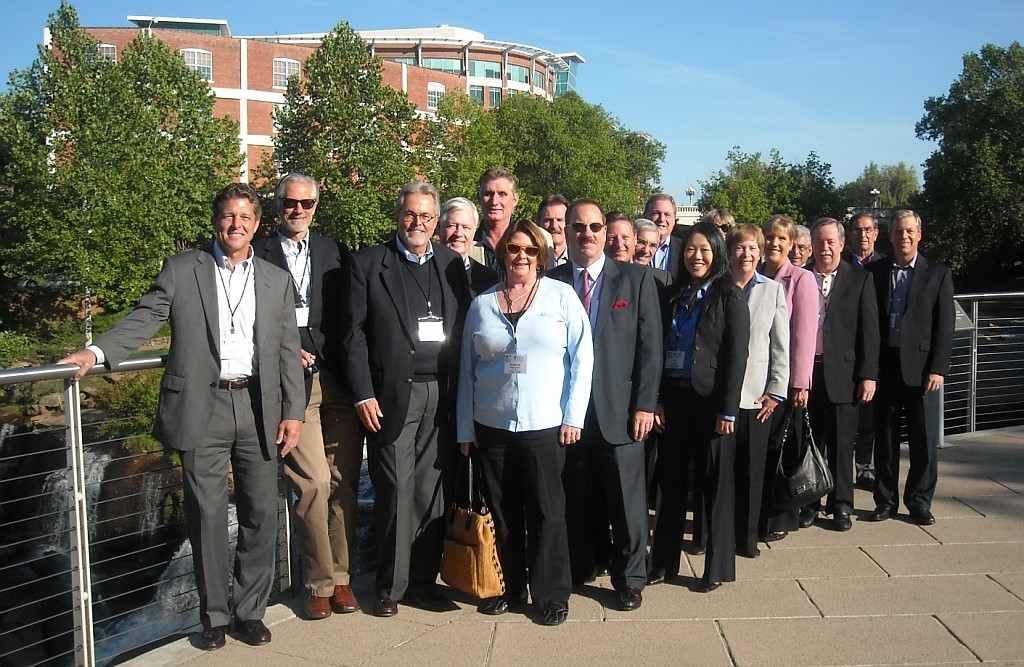- April 24, 2024
-
-
Loading

Loading

For someone who's been selected to go on a trip to Louisville, Ky. next month, John Moran isn’t exactly thrilled about his impending travel.
Moran, chairman of the city’s Downtown Improvement District, is part of a delegation of Sarasota officials who will make the trek to Kentucky from Sept. 23 through Sept. 26. City and county commissioners and administrators, among others, regularly attend this trip on nearly an annual basis, organized by the Greater Sarasota Chamber of Commerce and Economic Development Corp. of Sarasota County.
But for Moran, a major question lingered regarding the visit to Louisville and the five trips that came before it dating back to 2009: What purpose did it serve?
A conversation with Chris Gallagher, a member of the Downtown Sarasota Alliance board of directors, who is a regular attendee of the intercity journeys, did little to sooth his concerns.
“I said, ‘What have we implemented from these trips?’” Moran said. “There was nothing — the only thing that was his response was, ‘Well, there was a lot of camaraderie we had on the trip.’”
Moran is one of several members of the delegation whose trip will be funded with taxpayer money. Between travel costs and the roughly $1,400 expense of the programming, Moran estimated the visit would cost just shy of $2,000.
At a cost of nearly $10,000, at least six other public officials are slated to travel on an intercity trip this year: City Manager Tom Barwin, City Commissioner Liz Alpert, County Administrator Tom Harmer, County Business and Economic Development Director Jeff Maultsby and county commissioners Christine Robinson and Al Maio.
Moran suggested the DID expenditure would be better used toward an improvement project in Sarasota, and he wasn’t alone in his skepticism. Although the DID board eventually voted 3-1 to approve Moran’s trip at its Aug. 18 meeting, board member Eileen Hampshire agreed that little progress has been made as a result of earlier visits.
“I’ve seen all five of these things happen,” Hampshire said. “They all come back all excited, and I haven’t seen one concrete thing we’ve gotten out of it.”
As a local delegation once again prepares to descend on a model city, what can Sarasota residents expect to see implemented following this visit? And what gains have been made as a result of the past five trips?
LEAP of faith
The first trip in the series — now known as the Leadership Expedition to Accelerate Progress, or LEAP, for short — saw officials visit Asheville, N.C. Subsequent summits have been held in Greenville, S.C.; Charleston, S.C.; Chattanooga, Tenn. and Nashville, Tenn.
According to Steve Queior, president of the Greater Sarasota Chamber of Commerce, the goal is to learn the “best practices” in model cities. Event organizers select a location tailored to the interests and needs of the local community. Louisville, for example, offered an opportunity to learn about a waterfront community with successful education and workforce development programs that Sarasota leaders hope to potentially emulate.
“We look around the country and say — who’s being recognized, being ranked highly, getting credibility in the areas we’re interested in?” Queior said.
On the two meatiest days of the Louisville trip, Queior said the Sarasota delegation has a labor-intensive schedule. In addition to tours of the city and facilities of note such as a local business incubator, on an average day, attendees might hear three individual speakers and three panels discuss topics such as placemaking and regionalism.
Still, the questions surrounding the trip pertained less to the days out of town and more to what happened in the months and years after the visit was over. Queior offers up some evidence of applied learning: The chamber’s Talent 4 Tomorrow initiative, which focuses on pre-kindergarten to post-graduate education and training, was inspired by Charleston’s Cradle to Career program.
Progress on implementing other lessons from other cities may appear slower, but that doesn’t mean it’s not happening, Queior said. That’s why he thinks it’s important to have a diverse mix of representatives from the development, education and political communities. When one project strikes a cord with a particular group, he says it’s less likely it gets forgotten after the trip is over.
“We’re finding that tasking one organization to birddog or to keep the candle burning on a particular project area — be a convener, be a cheerleader to keep the concept going — helps,” Queior said.
Visiting these model cities also gives insight as to how their leaders were able to achieve progress, which often required a protracted effort. Hopefully, Queior said, it inspires Sarasota officials to move quickly to begin the arduous process of change — and it lets them know that change is attainable at all.
“It lets our community leaders see that our community could do about anything it wants to be better,” Queior said.
Still, some attendees are more willing to highlight the less tangible benefits as the main takeaway from these short excursions. At the August DID meeting, Downtown Economic Development Coordinator Norm Gollub pointed to a couple of smaller projects inspired by earlier trips in defense of the event.
Above all else, though, he said the visit was an opportunity to rub elbows with other leaders in a casual environment, free from the “rigidity of political correctness.” To Gollub and others, this represents a worthwhile byproduct of the travel in and of itself.
“That helps build that chemistry that’s needed to move initiatives forward, so you have a sense of comfort and relationships with these folks,” Gollub said. “That, to me — relationship building was primarily what we got out of it.”